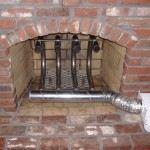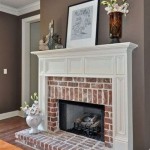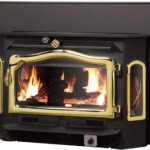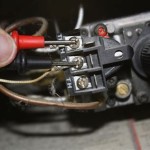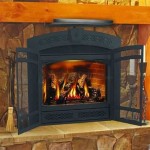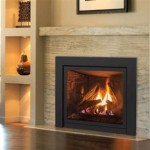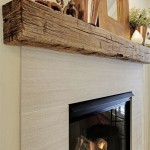Here's an article about remote control gas fireplaces, designed for clarity and informativeness, adhering to your specifications:
Remote Control Gas Fireplaces: Comfort and Control at Your Fingertips
Remote control gas fireplaces represent a significant advancement in home heating technology. They offer a blend of aesthetic appeal, functional warmth, and convenience that traditional wood-burning fireplaces simply cannot match. The ability to control a fireplace from the comfort of a sofa or armchair is a compelling feature, especially for those seeking ease of use and precise temperature management.
This article will delve into the various aspects of remote control gas fireplaces, examining their functionality, benefits, different types, installation considerations, safety features, and maintenance requirements. The aim is to provide a comprehensive understanding of this increasingly popular home heating solution.
The Functionality of Remote Control Gas Fireplaces
The core functionality of a remote control gas fireplace hinges on a sophisticated electronic control system. This system integrates with the fireplace's gas valve, ignition system, and flame sensor to provide seamless operation. When a command is issued from the remote control, a signal is transmitted to the fireplace's receiver, which then translates the signal into actions that control the flame height, fan speed (if equipped), and on/off status.
Most remote controls for gas fireplaces utilize radio frequency (RF) signals, offering a greater range and less susceptibility to interference compared to infrared (IR) remotes. This means the fireplace can be controlled from a considerable distance and even through walls, although obstructions can still affect the signal strength. The receiver unit within the fireplace often includes manual controls, allowing operation even if the remote control is misplaced or malfunctioning.
The sophistication of the remote control can vary widely. Basic models offer simple on/off control and flame height adjustment. More advanced models may incorporate features such as programmable timers, thermostat settings, and even child safety lockouts. Some systems can even be integrated with smart home devices, enabling control through voice commands or smartphone apps. The level of technological integration is a key differentiator between various remote control gas fireplace models.
A critical component is the pilot light system, which initiates the ignition sequence. Some fireplaces use a standing pilot light, which burns continuously, while others employ an electronic ignition system that only ignites the pilot light when the fireplace is turned on. Electronic ignition systems are generally more energy-efficient, as they eliminate the constant gas consumption of a standing pilot light. The remote control system manages the ignition process, ensuring safe and reliable startup every time.
The gas valve is directly controlled by the remote system, modulating the flow of gas to the burner based on the desired flame height. This allows for precise temperature control and efficient gas usage. Feedback from the flame sensor is crucial; if the sensor detects that the flame has extinguished unexpectedly, it will automatically shut off the gas supply to prevent a hazardous gas leak. This safety feature is a standard requirement for all modern gas fireplaces.
Benefits of Remote Control Gas Fireplaces
The most apparent benefit of a remote control gas fireplace is the unparalleled convenience it offers. The ability to turn the fireplace on or off, adjust the flame height, or set a timer without leaving a seat is a significant advantage, particularly for individuals with mobility issues or those who simply prefer a high level of comfort. This ease of use encourages more frequent enjoyment of the fireplace, enhancing the ambiance of the living space.
Precision temperature control is another key benefit. Unlike wood-burning fireplaces, which can be difficult to regulate, remote control gas fireplaces allow users to set a desired temperature. This is particularly useful in maintaining a comfortable and consistent room temperature. Thermostat settings on advanced remote controls enable the fireplace to automatically adjust the flame height to maintain the set temperature, ensuring energy efficiency and preventing overheating.
Safety is a paramount concern, and remote control gas fireplaces incorporate numerous safety features. The flame sensor, as mentioned earlier, automatically shuts off the gas supply in the event of flameout. Child safety lockouts on the remote control prevent accidental activation of the fireplace by children. Moreover, the sealed combustion design of many gas fireplaces minimizes the risk of carbon monoxide leaks into the home. These safety features provide peace of mind and make gas fireplaces a safe heating option.
Energy efficiency is a growing concern for homeowners, and remote control gas fireplaces offer tangible benefits in this area. The ability to precisely control the flame height and set a thermostat allows for efficient gas usage. Electronic ignition systems eliminate the continuous gas consumption of a standing pilot light. Moreover, many gas fireplaces are designed with high-efficiency burners and heat exchangers, maximizing the amount of heat transferred into the room and minimizing energy waste. Some models may even qualify for energy efficiency rebates or tax credits.
The aesthetic appeal of a gas fireplace is undeniable. Remote control functionality enhances this appeal by allowing the fireplace to be seamlessly integrated into the living space. The ability to control the flame height and set a timer allows for customizable ambiance, creating a warm and inviting atmosphere. From traditional log sets to contemporary glass media, gas fireplaces offer a wide range of design options to complement any décor. The remote control further enhances the aesthetic experience by eliminating the need for manual adjustments, preserving the clean lines and visual appeal of the fireplace.
Types of Remote Control Systems and Fireplaces
Remote control systems for gas fireplaces can be broadly categorized into basic, intermediate, and advanced models. Basic systems offer simple on/off control and flame height adjustment, typically using a handheld remote with a limited number of buttons. These systems are straightforward to use and are suitable for individuals who prioritize simplicity and ease of operation.
Intermediate remote control systems include additional features such as programmable timers and thermostat settings. These systems often feature a more sophisticated remote control with a digital display and more intuitive controls. The programmable timer allows users to set the fireplace to turn on or off automatically at specific times, while the thermostat setting enables precise temperature control. These systems offer a balance of convenience and functionality.
Advanced remote control systems represent the cutting edge of fireplace technology. They often incorporate features such as smart home integration, voice control compatibility, and advanced diagnostic capabilities. These systems may be controlled through smartphone apps, voice assistants like Amazon Alexa or Google Assistant, or a dedicated wall-mounted control panel. Advanced diagnostic features can alert users to potential problems with the fireplace, such as low battery levels or sensor malfunctions. These systems offer the ultimate in convenience, control, and connectivity.
Gas fireplaces themselves also come in various types, each with its own characteristics and suitability for different applications. Direct vent fireplaces draw combustion air from outside the home and vent exhaust gasses directly outdoors through a sealed system. This design eliminates the need for a traditional chimney and ensures a safe and efficient combustion process. Direct vent fireplaces are versatile and can be installed in a variety of locations.
Vent-free fireplaces, also known as ventless fireplaces, do not require a chimney or vent. They burn very cleanly and efficiently, releasing all of the heat generated into the room. However, vent-free fireplaces require careful monitoring to ensure proper ventilation and prevent the buildup of carbon monoxide. Local building codes may restrict or prohibit the installation of vent-free fireplaces. It's crucial to consult with a qualified professional to determine whether a vent-free fireplace is suitable for a particular application. B-vent fireplaces use existing chimneys or vents and are typically less efficient than direct vent models.
Another type includes electric fireplaces. While not gas fireplaces, they often include remote controls that adjust the simulated flame and heat output. They offer the look of a fireplace without the need for gas lines or venting, though the heat output is generally lower than gas models. They are also often much easier to install as they only require a standard electrical outlet.
The choice of remote control system and fireplace type depends on factors such as budget, desired features, installation constraints, and local building codes. Consulting with a qualified fireplace installer is essential to ensure that the selected system is appropriate for the specific application and meets all safety requirements.
The installation process for a remote control gas fireplace varies depending on the fireplace type and the existing infrastructure. Direct vent fireplaces require the installation of a venting system that extends to the exterior of the home. This may involve cutting through walls or ceilings, so it's essential to hire a qualified installer. Vent-free fireplaces require less extensive installation, but careful attention must be paid to ventilation requirements. The installer will also need to connect the fireplace to a gas line, which requires specialized skills and knowledge.

Gas Fireplace Remotes More Fireplaceremotecontrols Com

Skytech 1001th Thermostat Fireplace Remote Control

Sit Gas Fireplace Or Stove Remote Control Wall Bracket Hechler S Mainstreet Hearth Home Troy Missouri

Skytech Manual Remote Control With Timer For Gas Logs Fine S

Gas Fireplace Remote Control Guide Fireplaces Direct Learning Center

Skytech Remote Controlled Fireplace Gas Valve Control Kit Af Lmf R

Fireplace Remote Control How To S Fireplaces Direct Learning Center

Skytech Con Th Thermostat Fireplace Remote Control For Latching Solenoid Gas Valves

Duluth Forge Dual Fuel Ventless Gas Fireplace 26 000 Btu Remote Control Slate Gray Finish Model Dfs 300r 2gr 179258 The Home Depot

Superior Fireplaces Rc S 1 Remote Control With Lcd Display
Related Posts

